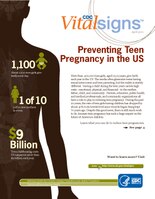
Photo from wikipedia
OBJECTIVE To explore windows of vulnerability to prenatal urinary phenol concentrations and preterm birth. DESIGN Prospective cohort. SETTING A large fertility center in Boston, Massachusetts. PATIENT(S) A total of 386… Click to show full abstract
OBJECTIVE To explore windows of vulnerability to prenatal urinary phenol concentrations and preterm birth. DESIGN Prospective cohort. SETTING A large fertility center in Boston, Massachusetts. PATIENT(S) A total of 386 mothers who sought fertility treatment and gave birth to a singleton between 2005 and 2018. INTERVENTION(S) None. MAIN OUTCOME MEASURE(S) Singleton live birth with gestational age <37 completed weeks. RESULT(S) Compared with women with non-preterm births, urinary bisphenol A (BPA) concentrations were higher across gestation among women with preterm births, particularly during mid-to-late pregnancy and among those with female infants. Second trimester BPA concentrations were associated with preterm birth (Risk Ratio [RR] 1.24; 95%CI: 0.92, 1.69), which was primarily driven by female (RR 1.40; 95%CI: 1.04, 1.89) and not male (RR 0.85; 95%CI 0.50, 1.46) infants. First trimester paraben concentrations were also associated with preterm birth (RR 1.17; 95%CI: 0.94, 1.46) and similarly the association was only observed for female (RR 1.46; 95% CI: 1.10, 1.94) and not male infants (RR 0.94; 95%CIC: 0.72, 1.23). First trimester urinary bisphenol S concentrations showed a suggested risk of preterm birth (RR 1.25; 95%CI: 0.82, 1.89), although the small case numbers precluded sex-specific examination. CONCLUSION(S) We found preliminary evidence of associations between mid-to-late pregnancy BPA and early pregnancy paraben concentrations with preterm birth among those with female infants only. Preterm birth risk may be compound, sex, and window specific. Given the limited sample size of this cohort, results should be confirmed in larger studies, including fertile populations.
Journal Title: Fertility and sterility
Year Published: 2021
Link to full text (if available)
Share on Social Media: Sign Up to like & get
recommendations!